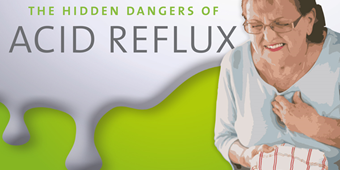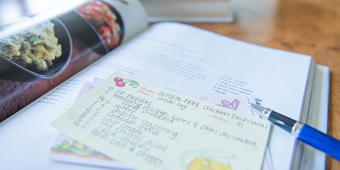Is Your Food Pipe Asking for an Esophageal Stretch?

Find Your Perfect Match
Answer a few questions and we'll provide you with a list of primary care providers that best fit your needs.
Stretching is good for our muscles and mobility. But did you know that stretching may also be good for your esophagus? A stretching (or dilation) procedure may be an option if you’re suffering from benign (non-cancerous) esophageal stricture, or narrowing of the esophagus.
Your esophagus is the long tube that transports food and liquids from your mouth to your stomach. The most common cause of stricture is esophageal scarring from acid reflux. Other causes include radiation treatment, ingestion of acidic or corrosive substances, immune system disease and damage from medical procedures.
Benign esophageal stricture typically occurs when stomach acid and other irritants damage the lining of the esophagus over time. This leads to inflammation, or esophagitis, and scar tissue, which causes the esophagus to narrow.
Typical symptoms include:
- difficult or painful swallowing
- unintended weight loss
- regurgitation of food or liquids
- sensation of something stuck in the chest after you eat
- frequent burping or hiccups
- heartburn
Call your health care provider if you have unresolved acid reflux or swallowing problems that do not go away. If left untreated, they could put you at risk for choking, dehydration, malnutrition or aspiration pneumonia, a bacterial infection that can occur when vomit, food or fluid enter your lungs through regurgitation.
Who Can Esophageal Stretching Help?
The most common cause of esophageal damage is acid reflux, also known as GERD (gastroesophageal reflux disease). GERD occurs when the muscle between the esophagus and stomach doesn’t close or tighten properly after you swallow, allowing stomach acid to flow back up into your esophagus. The result is heartburn, a burning sensation behind your breast bone.
The following problems also may be treated with esophageal stretching:
- Schatzki’s ring. An abnormal ring of tissue that forms where the esophagus meets the stomach.
- Achalasia. This condition blocks food and liquids from moving into your stomach from the esophagus. It’s caused by a defect in the lower esophageal sphincter (LES), a muscular ring that opens (relaxes) when you swallow.
- Eosinophilic esophagitis. A chronic allergic/immune system disease that causes redness and inflammation in the esophagus.
- Narrowing caused by radiation treatment to the chest or neck.
Call your health care provider if you have unresolved acid reflux or swallowing problems that do not go away.
How is Esophageal Stretching Performed?

Esophageal stretching widens a narrowed area of your esophagus. It’s typically performed under sedation along with an upper endoscopy, an incision-free, image-guided procedure that takes about 15 minutes.
Your doctor will use an endoscope, a narrow tube with a tiny light and camera at the end, and insert it through your mouth and into your esophagus. You might experience mild pressure in the back of your throat. The tube does not cause trouble breathing.
Your doctor carefully passes tiny tools through the endoscope and uses them to widen the stricture. Alternatively, your doctor might spray a local anesthetic to the back of your throat and then pass a weighted dilator through your mouth and into your esophagus.
What Results Can I Expect?
Most patients experience no symptoms after the procedure or a mild sore throat for the remainder of the day. You can resume eating the same day or the next day, depending on when the anesthetic no longer causes numbness to your throat. Your health care provider can tell you what to expect for the first several days after treatment.
Possible procedure risks include a tear or hole in the esophageal lining, in addition to infection and anesthesia risks.
You may need to have repeat dilations. This depends on the cause and extent of your narrowing. Repeat procedures can allow the dilation to take place gradually, reducing the risk of complications.
If your stricture was caused by acid reflux, you’ll likely need medication to treat that condition, which can prevent the narrowing from happening again. Follow your doctor’s instructions regarding food and lifestyle choices that can minimize the backup of acid into your esophagus.
Find Your Perfect Match
Answer a few questions and we'll provide you with a list of primary care providers that best fit your needs.
Source: American Society for Gastrointestinal Endoscopy; U.S. National Library of Medicine; Healthline




